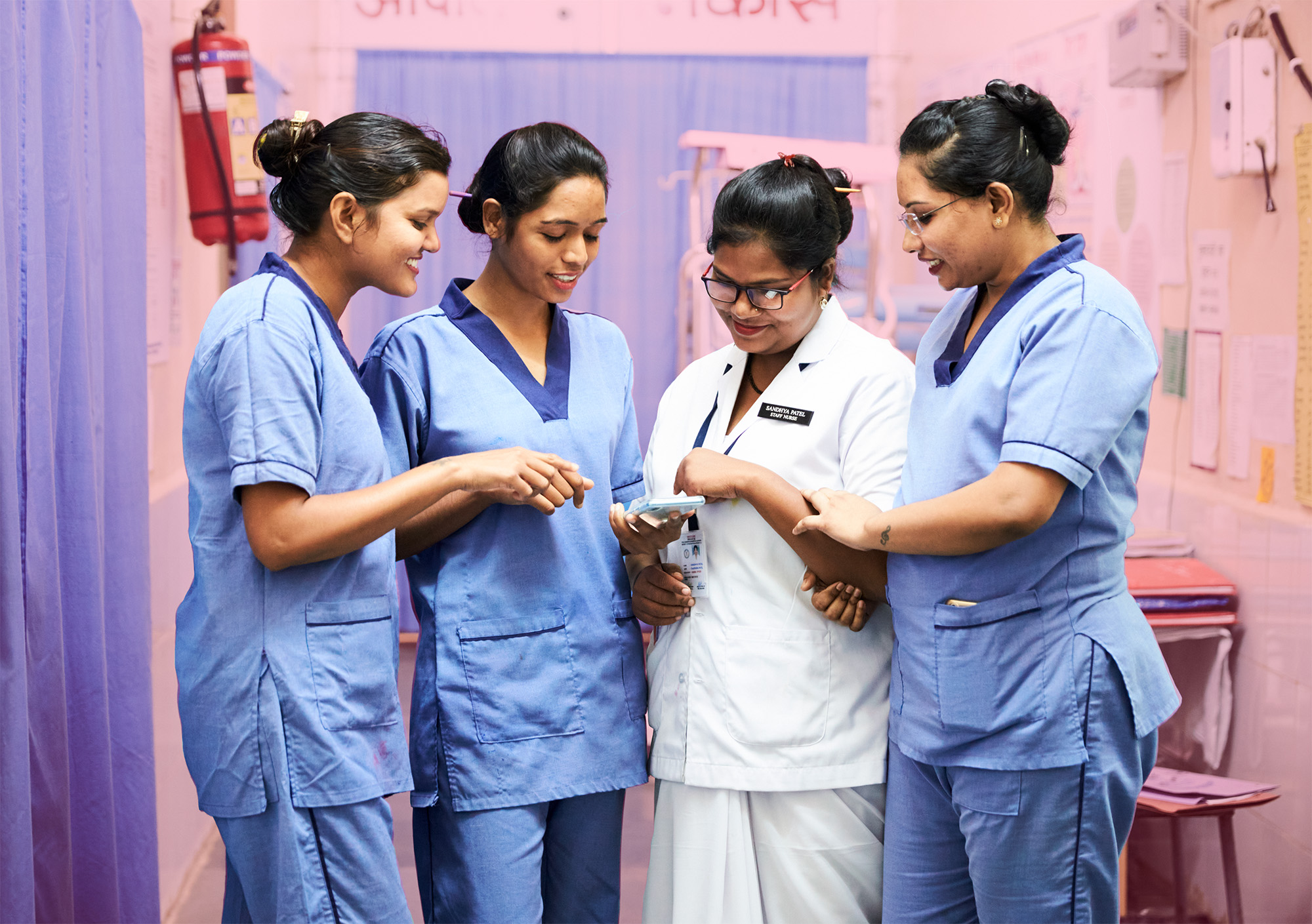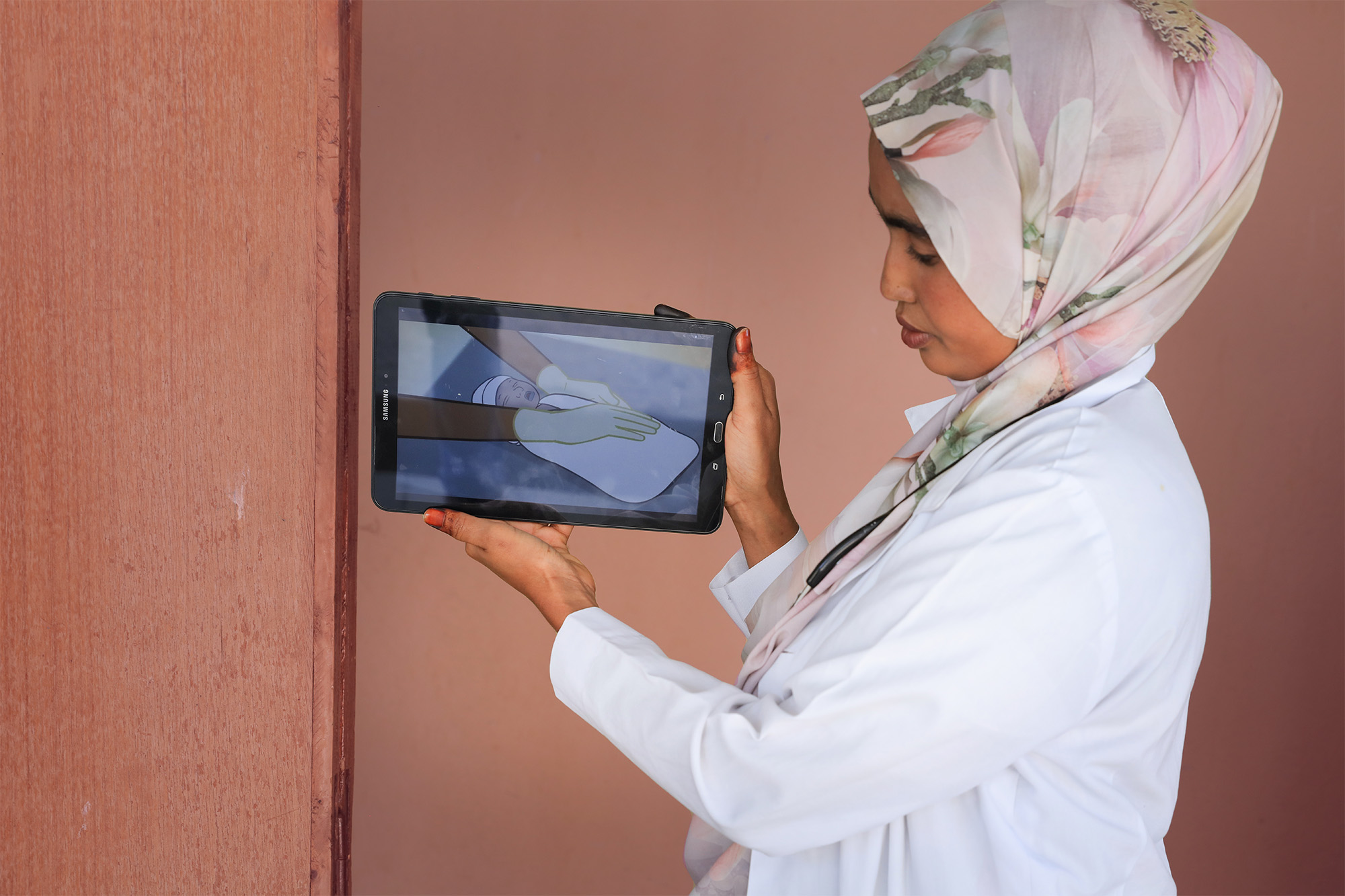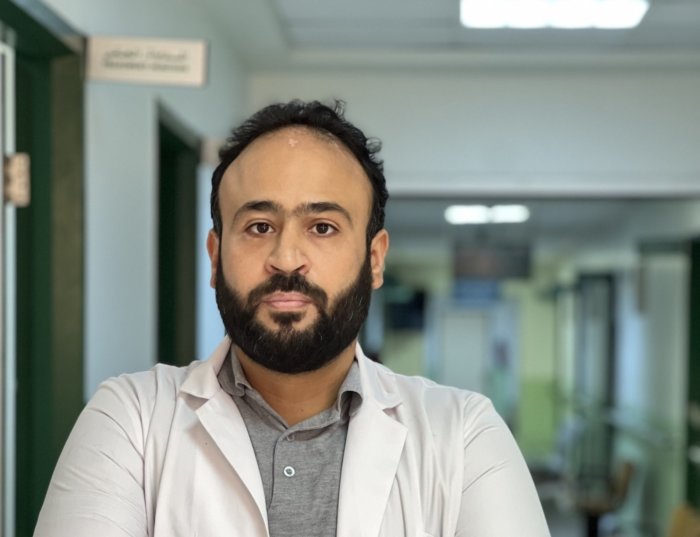First level heading – The Mobile App Helping Midwives Save Lives in Ethiopia(H1)

Governments are looking to digital solutions to bridge gaps in healthcare training. Credit: Maternity Foundation / Stine Heilmann
Standfirst text – A free mobile app developed in Ethiopia helps bridge the training gap by giving healthcare providers instant access to life-saving information on how to handle the most common childbirth emergencies.
For most of her 14 years as a midwife, whenever Andinet Tilahun had a question about how to treat a patient’s condition or carry out an unfamiliar procedure, she turned to Google for help. It was a slow and unreliable process. And if she was working in one of the many areas outside Addis Ababa, Ethiopia’s capital, that have no internet access, she often had to guess the answer – leaving her worried that she was not giving some mothers and newborns the best possible care.
Third-level heading(bold)
Now, Tilahun, 33, no longer has to scour the web for solutions. Instead, she consults an app on her phone to find up-to-date, global clinical guidelines and instructions on how to deal with common complications she might encounter while doing her work. All the information is downloaded onto her device, so she can consult it even when offline.
Pull-quote style – “If a baby is born not breathing, the app guides you on what to do with your hands to make it breathe,” said Tilahun. “When the correct procedure is done, the child starts to cry. It has made me more confident in my work.
Second level heading(H2)
Nearly half of all deaths in children under 5 years of age happened during birth or in the first 28 days of life in 2022, and every two minutes, a woman dies during pregnancy or childbirth. Almost 95% of those maternal deaths happen in low- and lower-middle-income countries. Most could have been prevented if midwives and health workers had better emergency skills and knowledge.
The Safe Delivery App (SDA) was developed to give birth attendants access to the life-saving skills they need in the field, along with training modules to build their confidence and knowledge. Created by Danish NGO Maternity Foundation, in collaboration with the University of Southern Denmark and the University of Copenhagen, the app was developed and piloted in Ethiopia a decade ago. Since then, it has rolled out to more than 70 countries and is being used by more than 400,000 health workers.

The Safe Delivery App uses simple illustrations and animations, adapted to different cultural contexts. Credit: Maternity Foundation
The main component of the SDA is a series of modules on topics including sepsis, hypertension, hemorrhage, and essential newborn care, along with an approved drugs list. Simple, animated instruction videos and step-by-step practical procedures outline important skills such as how to insert a peripheral IV and how to use vacuum extraction to help deliver a baby. Developed in accordance with World Health Organization (WHO) and International Confederation of Midwives (ICM) guidelines, the modules give users access to the same globally researched and vetted information, wherever they are in the world.
To support long-term learning, the app also contains a series of comprehensive knowledge quizzes on all the training modules. Midwives and nurses can work through the quizzes in their own time or through a mentoring program and can earn credits toward a formal certificate.
Mobile app bridges training gaps(H2)
Zemzem Mohammed, Maternal Health Program Coordinator at Ethiopia’s Ministry of Health, which endorses the SDA, said the app is especially useful in places like Ethiopia where the provision of quality maternal and neonatal healthcare faces a number of challenges, including limited access to electricity, the need to work in remote, hard-to-reach areas, and a lack of comprehensive, timely training.
Because of limited resources, the Ministry cannot train everyone as thoroughly as we would like,” she said. “So, it is important for healthcare providers to have the app on their phone as a backup reference that they can use without any support, because intervening quickly in obstetric emergencies is key for the health of the mother and baby.
Assessments by the Maternity Foundation of the SDA since it launched in 2015 show an average knowledge increase from 51% to 60% among people using the app, while their average skills score increased from 37% to 65%. The average increase in confidence was around 16%.
We’re not teaching someone from scratch – these are trained professionals,” said Maternity Foundation CEO Anna Frellsen. “Still, even though you have the diploma, when you are deployed in these very remote settings, you often don’t have the practical skills or the confidence to apply the theory that you learned. The app is there to support you.
WHO: “Harmonize digital health solutions”(H2)
Inconsistent provision of high-quality, ongoing training for maternal healthcare providers is one of the reasons that 70% of maternal deaths happen in sub-Saharan Africa, where healthcare systems are often under-funded, noted Dr. Jenny Cresswell, a sexual and reproductive health scientist at WHO. Skilled birth attendants “need to have continuing professional development,” she said. “You don’t want to be in the situation where you’re the only person in an area providing care and someone comes in with a complication that you’ve only ever seen during one lecture 20 years ago.”
But training alone is not enough, Cresswell added. Lowering the maternal mortality rate also requires improving the conditions in which healthcare providers work. Creating that enabling environment includes providing adequate pay, mental health support, supportive supervision, and access to equipment – everything from vacuum extractors to disposable gloves. “It also includes things like having access to electricity and lighting, so that you’re not trying to use the torch on your mobile phone with one hand and perform a clinical procedure with the other,” Cresswell said.

Governments are looking to digital solutions to bridge gaps in healthcare training. Credit: Maternity Foundation / Stine Heilmann
Governments are increasingly looking to digital solutions to try to bridge their healthcare resource gaps, weaving apps like the Safe Delivery App into broader digital health systems. But getting various tools to work together and ensuring they are all based on reliable information is a challenge, said Tigest Tamrat, a scientist at WHO. “One project may have a tool to help train health workers. Another might be focused on health data collection. And you could end up with health workers having to use many different tools that may not meaningfully support their work or talk to each other,” she said.
To address this problem, WHO published its SMART Guidelines in 2021. The comprehensive sets of digital system components – including code libraries, algorithms, and interoperability standards – help developers, technologists, and governments integrate WHO’s recommended health interventions into their digital health systems in a way that is coordinated and based on best practices.
Still, even the most well-developed and integrated tech solutions can only have limited impact in a health system that is struggling to provide its healthcare professionals with the resources, training, and support they need. “Digital tools can give that extra nudge, but unless you also try to address those other issues, the improvements with digital tools will be marginal,” said Tamrat.
“There are great things that digital health can do, especially in empowering health workers and clients,” she added. “But it has to be grounded within a broader understanding of the health system context.”



